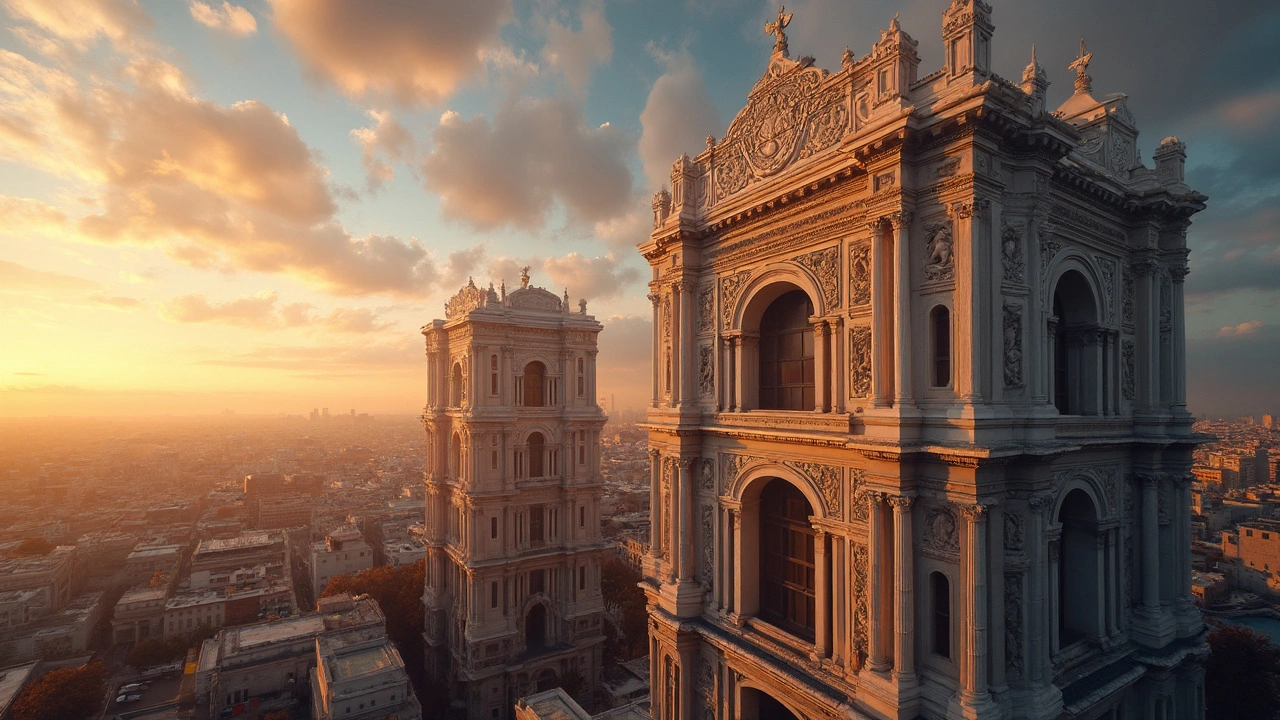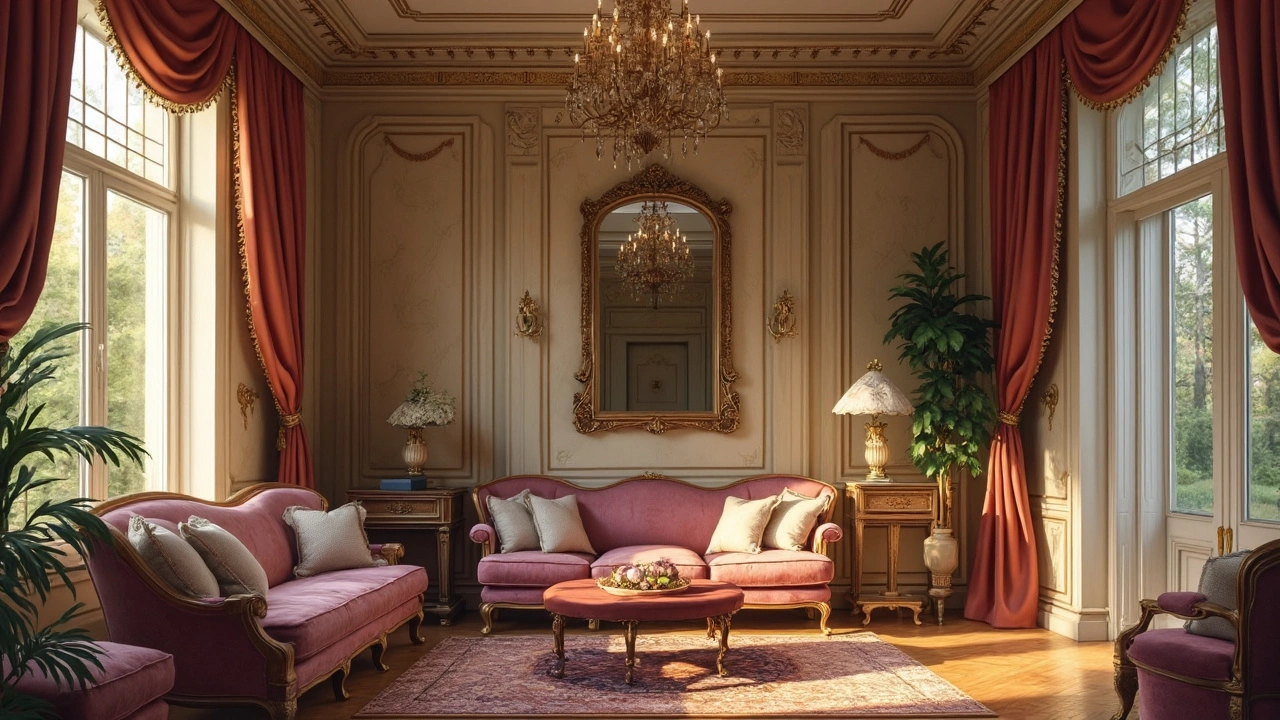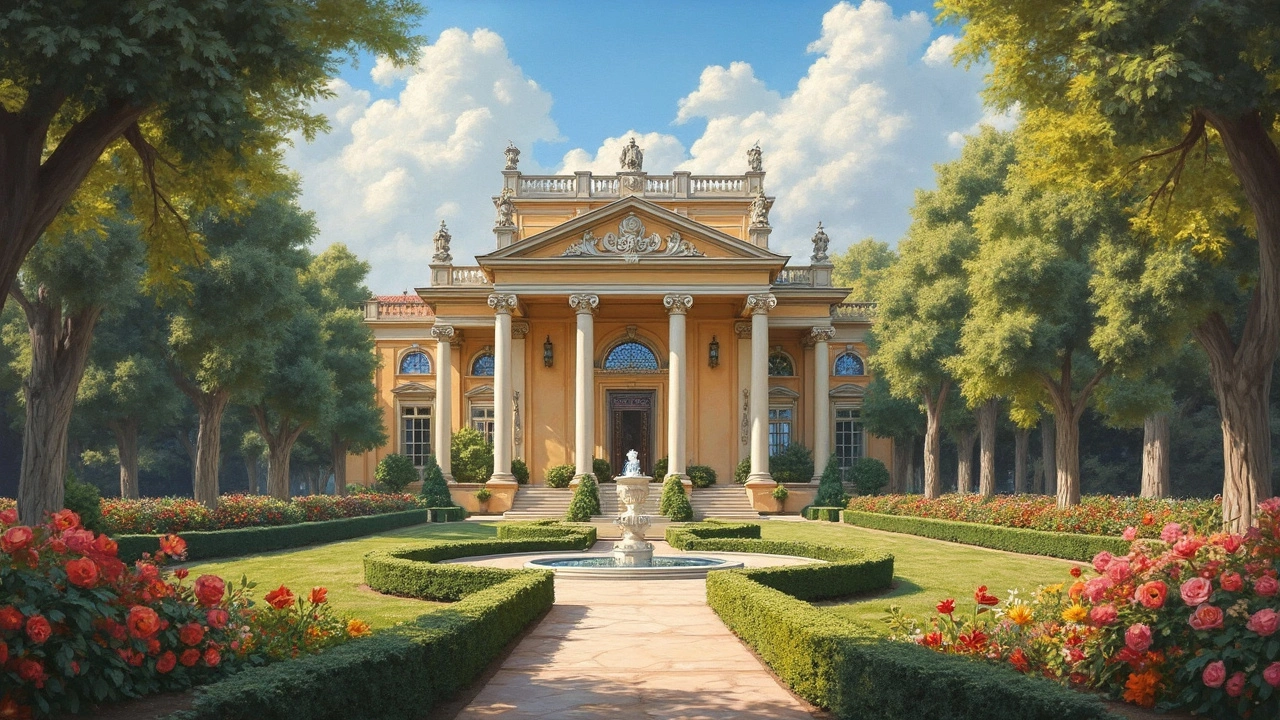The Renaissance Revival: Rediscovering Architectural Excellence
 Mar, 24 2025
Mar, 24 2025
Have you ever walked past a building and felt transported back in time? That's the magic of Renaissance Revival architecture. This style, known for its elaborate details and stately presence, takes its cue from the grand designs of Renaissance Europe. If you're curious about old-world elegance meeting modern flair, you're in for a treat.
Picture intricate facades, majestic columns, and a harmonious balance—this is what you get with Renaissance Revival. But it's not just about sticking to the past. Today’s architects and designers are actively blending these classic elements with modern sensibilities, creating spaces that feel both timeless and fresh. So, whether you're considering a home renovation or just love swooning over architectural wonders, understanding this style could add depth to your appreciation of design.
- Understanding Renaissance Revival
- Key Characteristics
- Influence on Modern Design
- Tips for Incorporating at Home
- Famous Structures to Explore
Understanding Renaissance Revival
The Renaissance Revival movement is like a big ol' hall of mirrors reflecting the majestic past of architectural greatness. Originating in the 19th century, this style aimed to capture the elegance and symmetry of the Renaissance period, but with a modern twist. It's not just about copying; it's about paying homage while making it work in new ways.
Setting the Stage
Let’s set the scene a bit. By the time the 1800s rolled around, architects were pretty eager to bring back the grandeur of past European styles, especially from the 14th to 17th centuries. This era, known for its unique blend of art and science, gave birth to some seriously impressive buildings and art. The revival style wasn’t one single shift but more of a mash-up of ideas—like a greatest hits album but for architecture.
Key Components
Think of Renaissance Revival design and you might picture buildings with gigantic columns, pediments, arches, and domes. The structures look like they could easily play the backdrop in a historical flick. Symmetry and proportion are huge, giving buildings that well-balanced feel. Designers loved using classical elements such as Corinthian or Ionic columns—you know, the ones that scream 'I'm important!'
Why It Matters Today
While the Renaissance Revival might have been born out of nostalgia, it's seeing a bit of a resurgence now. Builders and homeowners alike are drawn to its charm and elegance, but also its durability. And who wouldn’t want a home that both looks good and stands the test of time?
For those restoring old beauties or trying to replicate the look, knowing the nitty-gritty details can be super helpful. Whether you're exploring self-guided tours of iconic buildings or renovating your own home, having a grasp of these elements is key.
Key Characteristics
When it comes down to what makes Renaissance Revival architecture stand out, certain key elements come into play. If you've ever wondered why some buildings immediately catch your eye with their regal presence, here's why.
Symmetry and Proportion
One major element that almost every Renaissance Revival building shares is its focus on symmetry and proportion. This design ethos is all about balance, inspired directly by the works of ancient Roman and Greek architects. Think about the orderly facade with equally spaced windows and doors, creating a visual harmony that is simply soothing to see.
Columns and Pilasters
You can't talk about this style without mentioning its love for columns and pilasters. These aren't just there to look pretty—they serve to mimic structural functions of ancient buildings, adding both function and flair. Whether Ionic, Doric, or Corinthian, each type adds its own unique touch.
Decorative Elements
Let's not forget about the eye candy! Renaissance Revival goes big on decorative flourishes like cornices, reliefs, and friezes. These embellishments often feature motifs like foliage, mythical creatures, or geometric patterns. All these decorative elements work together to make even the simplest buildings seem rich with history.
Materials and Techniques
This style often employs durable materials such as stone and brick, which were traditionally used for their robustness and aesthetics. Skilled craftsmen and intricate masonry highlight the timeless appeal that these materials bring.
Interested in adding a touch of Renaissance Revival style to your own home? Look for elements like arched windows or elaborate door frames to capture a snippet of this architectural excellence without diving all the way in.

Influence on Modern Design
Renaissance Revival architecture isn't just sitting back in the annals of history; it's actually influencing modern design in some pretty cool ways. The emphasis on symmetry, harmony, and intricate details has found a new home in contemporary spaces, giving the old-meets-new vibe that lots of designers and homeowners crave today.
One clear example of its influence is in the use of arches and columns. These aren't just relics of the past. They're popping up in modern homes, bringing a sense of grandeur without going overboard. Instead of heavy stone, you might see them crafted from lightweight materials, but the visual impact remains strong.
Blending Old with the New
What makes Renaissance Revival stand out even now is its flexibility. Designers are creatively blending these classic elements with state-of-the-art materials and technology. Think about hotels or museums with modern facades that hide a Renaissance-inspired atrium or lobby. These spaces offer a dynamic experience, allowing visitors to enjoy the best of both worlds.
For instance, a modern office building might integrate Renaissance-inspired decorative moldings or geometric floor patterns, offering a nod to tradition while keeping things fresh and current. This integration not only elevates aesthetic appeal but can also enhance visitors’ perception of space.
Table: Popular Blends in Modern Design
| Element | Modern Twist |
|---|---|
| Columns | Lightweight, minimalistic |
| Arches | Simplified, oversized |
| Moldings | Sleek, integrated lighting |
The great thing about this ongoing revival is how accessible it’s becoming. People can infuse their own homes with a touch of Renaissance Revival by incorporating statement pieces that reflect this grand style, like a boldly framed mirror or a piece of art that channels the era's essence. The key is to balance, ensuring these elements enhance rather than overpower your space.
Tips for Incorporating at Home
Want to bring a touch of Renaissance Revival magic into your home? It's easier than you might think. Let’s dive into some practical steps you can take to embrace this timeless style right at home.
1. Start with Structure
Incorporate elements like symmetry and classical proportions. Look into adding arched doorways or windows which are staple features of this style. If remodeling isn't on the cards, you can use mirrors and art with symmetrical frames to bring that feel.
2. Focus on Details
Details make a big difference! Consider crown moldings and ornate trims to give your spaces that elegant touch. Materials like marble or faux finishes can also help recreate the opulence of Renaissance Revival without breaking the bank.
3. Color Your World
Opt for a palette rich with earthy tones like deep blues, greens, and golds that were iconic during the Renaissance period. These colors add a sense of warmth and sophistication to any room.
4. Furnish with Flair
When it comes to furniture, think luxurious and comfortable. Look for pieces with intricate details like carved wood or rich upholstery. It's about bringing that sense of history with a modern sensibility.
"Renaissance architecture gives us the powerful tools of balance and harmony to shape our modern spaces," says Annabelle Carter, a well-respected architectural historian.
5. Light It Up
Never underestimate the power of good lighting! Chandeliers or wall sconces with intricate designs can instantly elevate your room, giving it that architectural excellence reminiscent of historic times.
Embrace these tips to start your journey into the world of Renaissance Revival architecture and transform your home into a modern masterpiece with classic charm.

Famous Structures to Explore
When we dive into Renaissance Revival architecture, there's no shortage of stunning structures across the globe. These aren't just buildings; they're chapters of history standing tall.
Palace of Westminster, London
Home to the UK Parliament, the Palace of Westminster is a classic example of Renaissance Revival. Its famous Big Ben clock tower and intricate Gothic-style detailing showcase the grandeur and intricacy typical of the style. It's a must-visit for architecture enthusiasts.
The Breakers, Newport
This mansion in Rhode Island, USA, is a sight to behold. Built for the Vanderbilt family, The Breakers exemplifies the luxury and attention to detail found in Renaissance Revival homes. Its lavish interiors and spectacular ocean views make it a timeless masterpiece.
National Museum, Prague
For those exploring Europe, Prague’s National Museum is a gem. With its striking facade and majestic dome, it offers visitors an immersive dive into both history and design.
- Design Highlights: Boasts elaborate frescoes and sculptures.
- Visitor Insights: Offers a chance to explore exhibitions that span centuries of history.
New York Public Library, New York City
One of the world's most famous libraries, the New York Public Library houses a treasure trove of books and captivating architecture. Its impressive columns and vast reading rooms are prime examples of this architectural style.
| Structure | Location | Completion Year |
|---|---|---|
| Palace of Westminster | London | 1870 |
| The Breakers | Newport, Rhode Island | 1895 |
| National Museum | Prague | 1891 |
| New York Public Library | New York City | 1911 |
The beauty of these famous structures is in their storytelling through architecture, blending the past and present. Whenever possible, try to visit these places in person to truly appreciate the craftsmanship and history they embody.